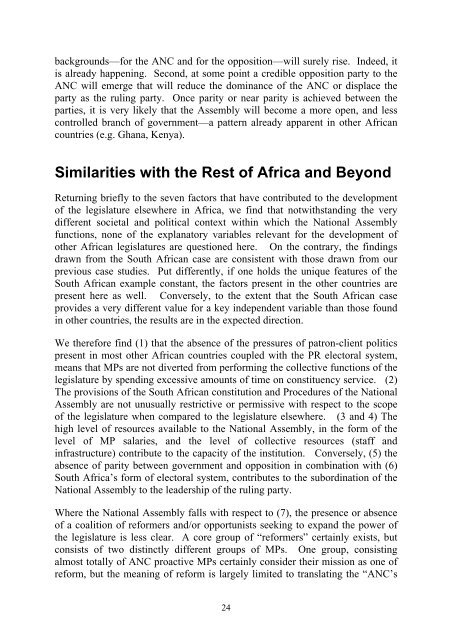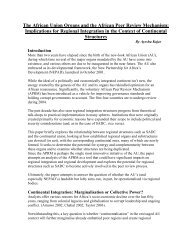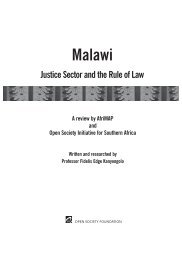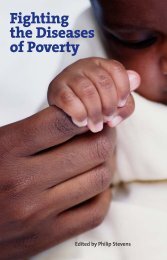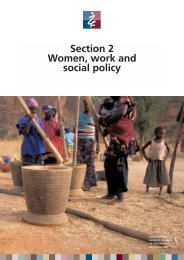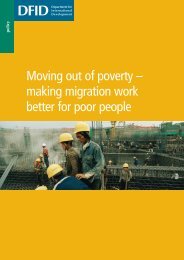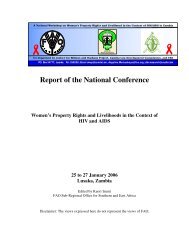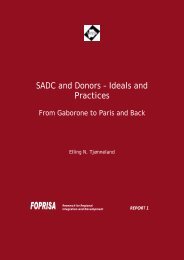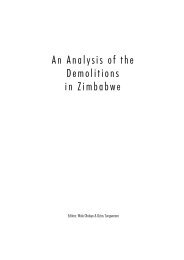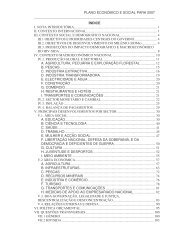400Kb ~ 2 min (33 pages) - SARPN
400Kb ~ 2 min (33 pages) - SARPN
400Kb ~ 2 min (33 pages) - SARPN
You also want an ePaper? Increase the reach of your titles
YUMPU automatically turns print PDFs into web optimized ePapers that Google loves.
ackgrounds—for the ANC and for the opposition—will surely rise. Indeed, itis already happening. Second, at some point a credible opposition party to theANC will emerge that will reduce the do<strong>min</strong>ance of the ANC or displace theparty as the ruling party. Once parity or near parity is achieved between theparties, it is very likely that the Assembly will become a more open, and lesscontrolled branch of government—a pattern already apparent in other Africancountries (e.g. Ghana, Kenya).Similarities with the Rest of Africa and BeyondReturning briefly to the seven factors that have contributed to the developmentof the legislature elsewhere in Africa, we find that notwithstanding the verydifferent societal and political context within which the National Assemblyfunctions, none of the explanatory variables relevant for the development ofother African legislatures are questioned here. On the contrary, the findingsdrawn from the South African case are consistent with those drawn from ourprevious case studies. Put differently, if one holds the unique features of theSouth African example constant, the factors present in the other countries arepresent here as well. Conversely, to the extent that the South African caseprovides a very different value for a key independent variable than those foundin other countries, the results are in the expected direction.We therefore find (1) that the absence of the pressures of patron-client politicspresent in most other African countries coupled with the PR electoral system,means that MPs are not diverted from perfor<strong>min</strong>g the collective functions of thelegislature by spending excessive amounts of time on constituency service. (2)The provisions of the South African constitution and Procedures of the NationalAssembly are not unusually restrictive or permissive with respect to the scopeof the legislature when compared to the legislature elsewhere. (3 and 4) Thehigh level of resources available to the National Assembly, in the form of thelevel of MP salaries, and the level of collective resources (staff andinfrastructure) contribute to the capacity of the institution. Conversely, (5) theabsence of parity between government and opposition in combination with (6)South Africa’s form of electoral system, contributes to the subordination of theNational Assembly to the leadership of the ruling party.Where the National Assembly falls with respect to (7), the presence or absenceof a coalition of reformers and/or opportunists seeking to expand the power ofthe legislature is less clear. A core group of “reformers” certainly exists, butconsists of two distinctly different groups of MPs. One group, consistingalmost totally of ANC proactive MPs certainly consider their mission as one ofreform, but the meaning of reform is largely limited to translating the “ANC’s24


